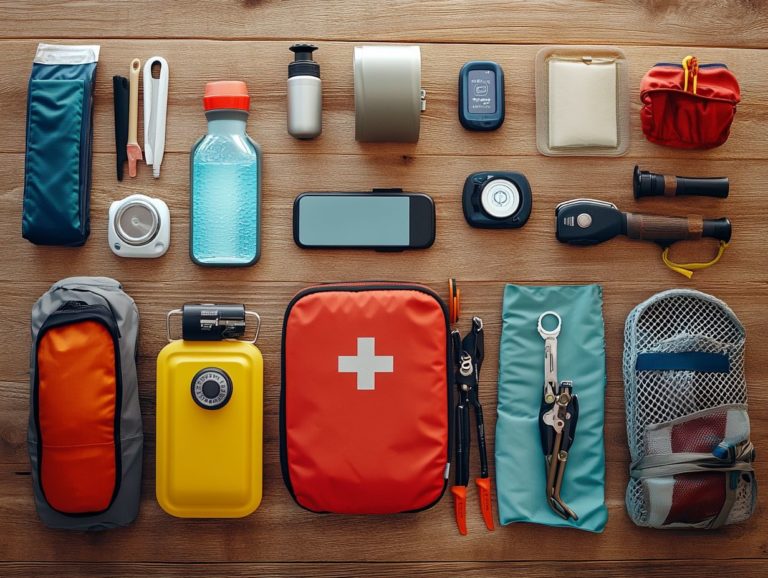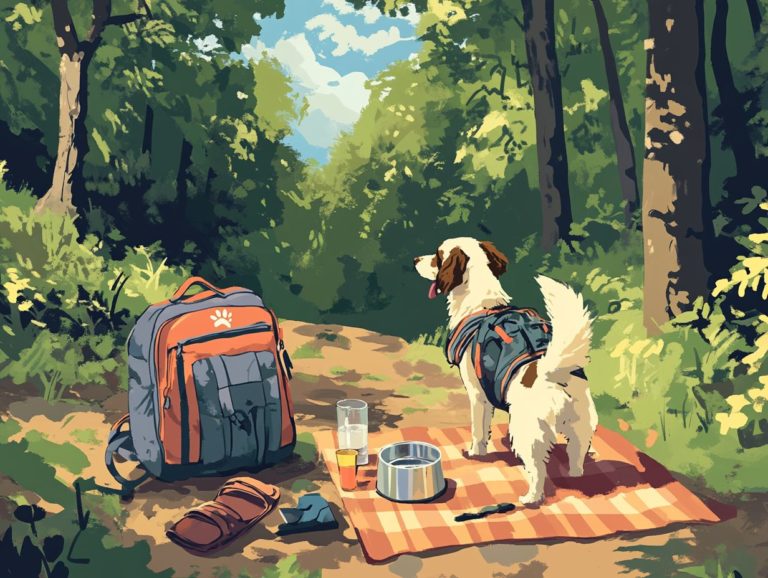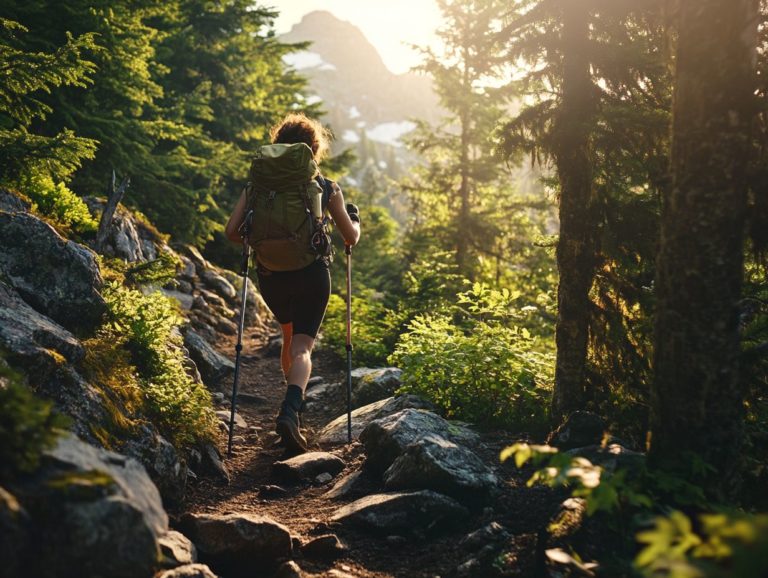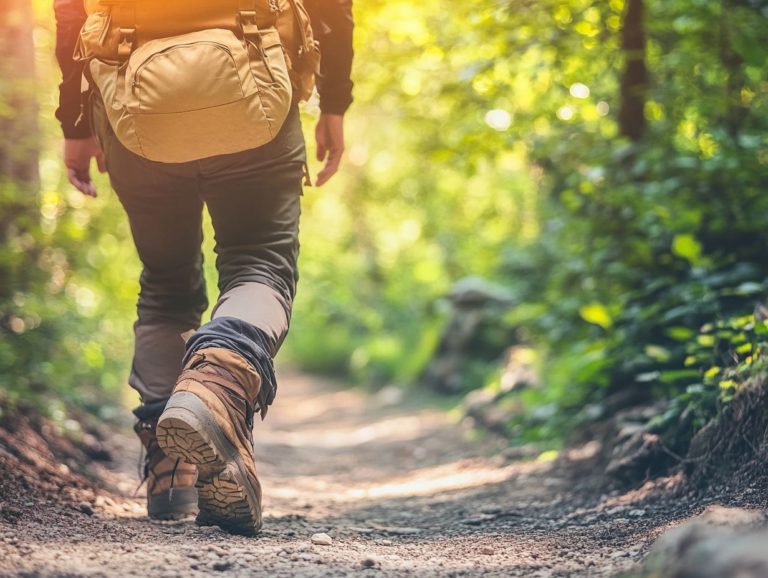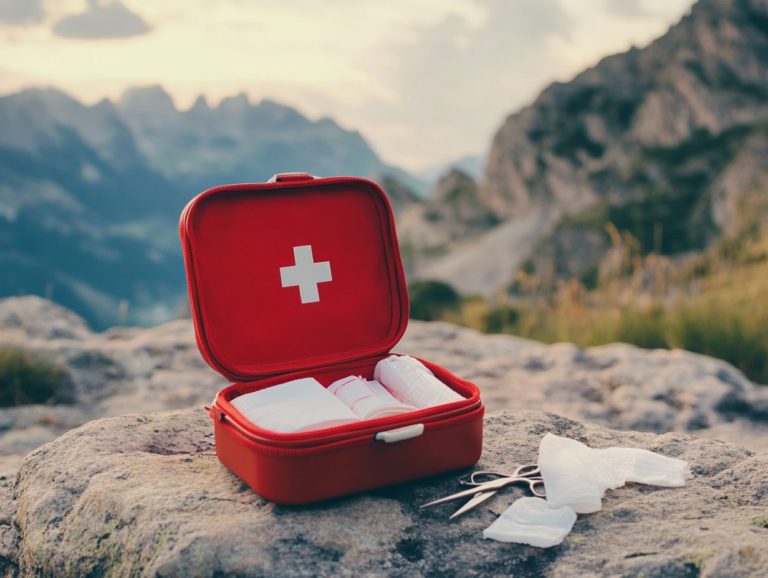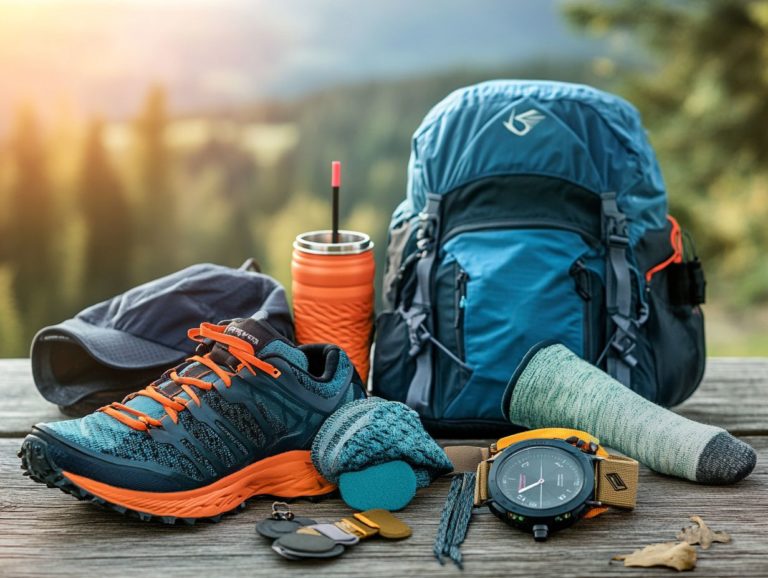How to Enjoy a Solo Hiking Trip Safely
Solo hiking is a fantastic way to adventure and discover yourself. It helps you connect deeply with nature and grow personally.
Careful planning is essential for safety and enjoyment on your journey.
This guide covers the many benefits of solo hiking, how to choose the perfect trail, what supplies to pack, and important safety tips.
Get ready to dive into the wilderness with confidence!
Contents
- Key Takeaways:
- Benefits of Solo Hiking
- Planning Your Solo Hiking Trip
- Safety Precautions for Solo Hiking
- Mental and Physical Preparation for Solo Hiking
- Enjoying Your Solo Hiking Trip
- Frequently Asked Questions
- What should I consider before embarking on a solo hiking trip?
- How can I stay safe while hiking alone?
- What should I do if I encounter wildlife while hiking solo?
- How can I prepare for emergencies on a solo hiking trip?
- What precautions should I take when hiking solo in remote areas?
- What are some ways to make the most of a solo hiking trip?
Key Takeaways:
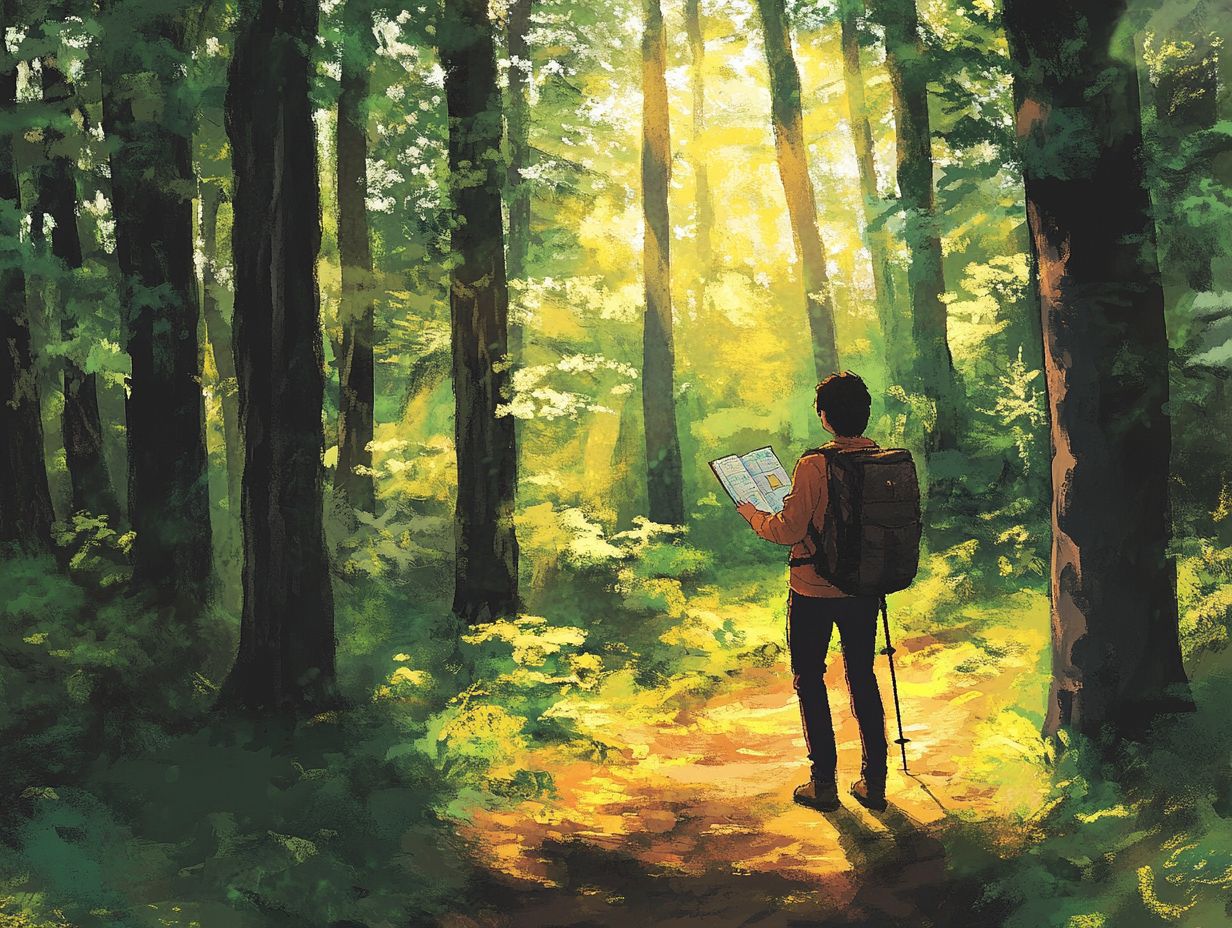
- Solo hiking helps you grow personally and build independence.
- Planning, emergency communication, and wildlife knowledge ensure safety.
- Enjoying nature relies on mental preparation and appreciation.
Benefits of Solo Hiking
Solo hiking offers many benefits beyond physical exercise. It s a way to help you grow and become more independent.
Whether you find peace in a quiet forest or enjoy stunning mountain views, each hike becomes a unique adventure.
Personal Growth and Independence
Hiking alone develops essential life skills and boosts your confidence. You ll navigate different terrains while embracing nature’s tranquility.
Each unique experience challenges your comfort zones. This journey nurtures your self-reliance and resilience, showing you can tackle obstacles on the trail and in life.
Being alone also allows time for reflection, leading to personal growth and emotional well-being. This practice strengthens your mind and helps you face future challenges with renewed energy.
Planning Your Solo Hiking Trip
Effective planning is key for a successful solo hiking adventure. Select the right trail and pack the essential gear like food and water.
This preparation greatly enhances your outdoor experience.
Choosing the Right Trail
Selecting the right trail is crucial. It sets the tone for the adventures and challenges you’ll face in places like Zion or Arches National Park.
Consider the difficulty level of the trails. They can range from easy walks to challenging climbs.
The scenery can make your hike memorable. Look for stunning views and landmarks, like unique rock formations or beautiful waterfalls, to enrich your journey.
Important Supplies to Pack

Packing the right supplies is vital for your solo hiking adventure. Ensure you have all the necessary gear, including food, water, and safety equipment to handle any situation that might arise.
Before you set off, check that everything is in good working order. From your sturdy hiking boots to your reliable navigation tools, this prep not only boosts your adventure but also gives you the peace of mind you need in the wild! For more detailed guidance, explore how to prepare for a long hike.
Along with food and hydration systems, pack a first-aid kit, a whistle for signaling assistance, and a flashlight for those unexpected moments when darkness falls. These essential supplies will enhance your comfort and significantly improve your safety. Additionally, knowing how to overcome hiking challenges will allow you to navigate the trails with confidence.
Safety Precautions for Solo Hiking
When embarking on a solo hiking adventure, prioritizing safety precautions is essential. This includes everything from establishing reliable emergency communication tools to honing your navigation skills.
Being well-prepared enhances your experience and equips you to handle any animal encounters that may arise along your journey.
In solo hiking, mastering emergency communication and navigation is crucial. Equip yourself with tools like a whistle and GPS devices (Global Positioning System), such as Garmin, to ensure safety and enable a swift response when facing unexpected situations.
Being prepared for the unforeseen is paramount for outdoor enthusiasts, as even the most seasoned hikers can find themselves in precarious circumstances. A whistle, though compact, can carry sound over great distances, effectively drawing attention in moments of distress.
Reliable navigation tools including traditional compasses and modern GPS devices help you chart your course or find your way back when trails become unclear. By incorporating these methods into your gear, you significantly enhance your safety and confidence, ensuring you re ready for challenges.
Dealing with Wildlife
Dealing with wildlife is a crucial consideration for solo hiking. It requires careful preparation and knowledge to mitigate the risks associated with animal encounters in the wild.
To ensure safety, arm yourself with the right information and tools before you head out. Familiarize yourself with the types of wildlife you might encounter in your area, and learn to recognize behaviors that could signal an impending meeting.
Carrying deterrents, such as bear spray or noise-making devices, can act as effective preventive measures. Staying vigilant during hikes, sticking to marked trails, and making noise can help you avoid unexpected encounters with animals.
If you find yourself face-to-face with wildlife, knowing how to respond calmly and appropriately can make all the difference, safeguarding both your safety and the well-being of the creatures you encounter.
Mental and Physical Preparation for Solo Hiking
Preparing both mentally and physically for solo hiking is essential. This preparation equips you with the stamina and resilience required to navigate challenging trails while fully embracing the solitude of nature during your adventures.
Building Endurance and Mental Toughness
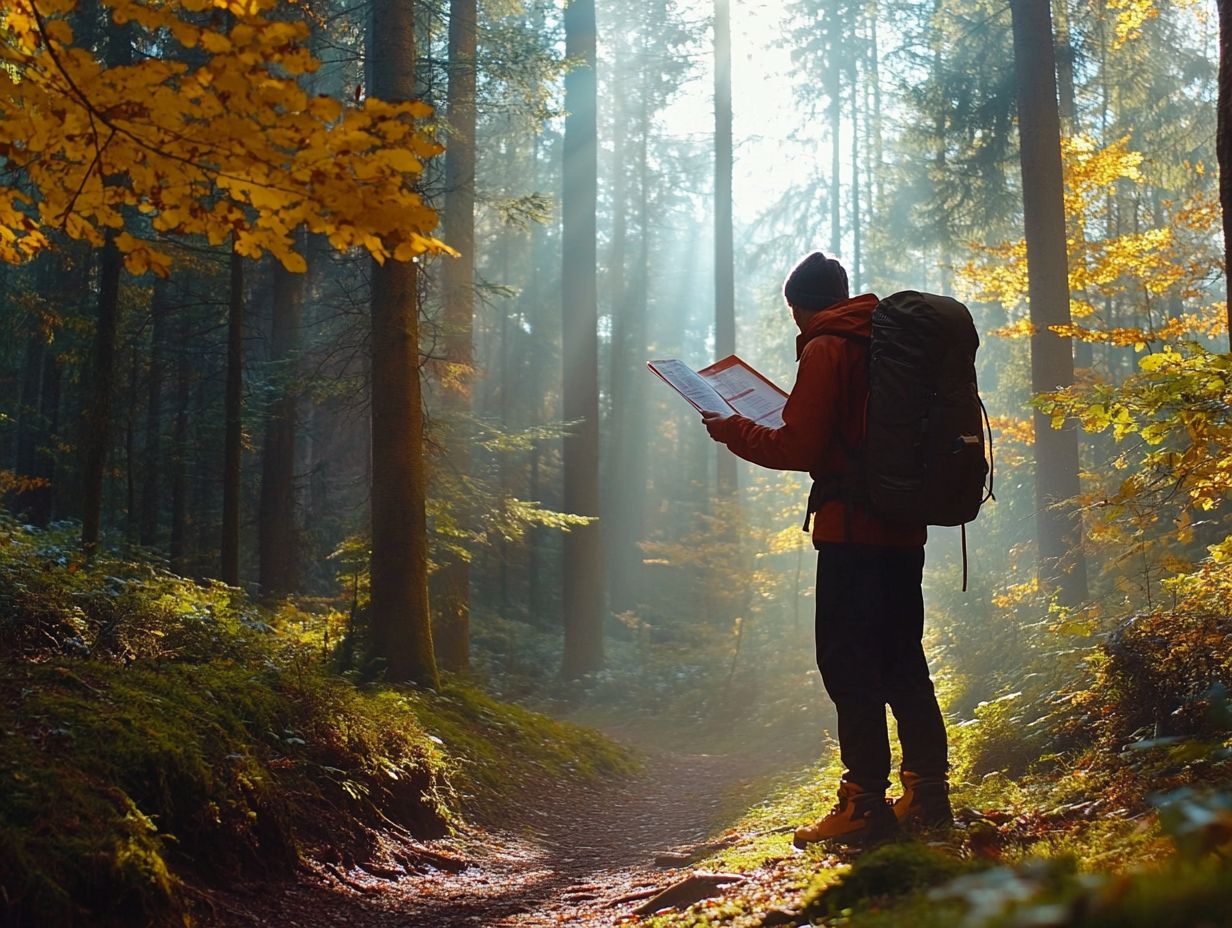
Building endurance and mental toughness is essential for your solo hiking adventures. It gives you the power to conquer physical challenges and maintain a positive mindset on those lengthy or strenuous trails.
To achieve this, engage in a well-rounded training plan that balances both physical preparation and mental conditioning. Physical exercises like long-distance running, cycling, and interval training which involves short bursts of intense exercise followed by rest can significantly enhance your stamina, enabling you to tackle demanding terrains with ease.
In parallel, integrating mindfulness practices such as meditation or deep-breathing exercises can strengthen your mental toughness, cultivating a calm and focused mindset when faced with adversity.
By combining these strategies, you create a well-rounded approach that prepares your body and fortifies your mind, ensuring you’re fully equipped to handle any challenges that lie ahead.
Maintaining Proper Nutrition and Hydration
Maintaining proper nutrition and hydration is absolutely essential for you as a solo hiker. It directly impacts your physical performance and overall well-being during those outdoor escapades.
Without sufficient food and water, even the most seasoned adventurers may find themselves feeling drained and unable to fully embrace the journey ahead. That s why it s crucial to select energy-dense foods like nuts, energy bars, and dried fruits. These options are not only lightweight but also incredibly easy to pack.
Be strategic about your water consumption. Aim to drink water regularly ideally every 30 minutes to keep yourself well-hydrated. Carrying a portable water filter or purification tablets ensures you have safe drinking options, allowing you to explore the trails without the nagging worry of running out of this vital resource.
Enjoying Your Solo Hiking Trip
To fully enjoy your solo hiking trip, it s essential to strike the perfect balance between thorough preparation and the freedom to immerse yourself in nature. This approach helps you maximize your experience while ensuring you feel both comfortable and secure in your surroundings.
Taking Time to Appreciate Nature
Taking time to appreciate nature is essential for your solo hiking experience. It helps you soak in the tranquility and beauty that surrounds you.
As you wander along serene trails, you cultivate a profound sense of comfort that often springs from deep introspection and a genuine connection with the natural world. This mindful engagement sparks an awareness of intricate details that may otherwise go unnoticed like the gentle rustling of leaves, the vibrant colors of wildflowers, or the soft whispers of the wind.
With each step you take, invite yourself to witness the wonders of the wilderness, transforming your solitary hike into an enriching journey of self-discovery and rejuvenation.
Staying Safe and Aware of Your Surroundings
Staying safe and aware of your surroundings is essential for solo hikers; it not only mitigates risks but also enhances the overall hiking experience.
To elevate your safety game, always prepare thoroughly before hitting the trail. Research your chosen route, familiarizing yourself with the terrain and any potential hazards that may await.
It’s crucial to carry the necessary gear, including a map, compass, first-aid kit, and enough food and water to sustain you.
Practice situational awareness to enhance your safety. This means being attuned to your immediate environment while remaining mindful of shifts in weather and wildlife activity. Regularly checking your surroundings allows you to spot potential dangers early, giving you the power to make prompt and informed decisions.
Don t forget the importance of communication. Letting someone know your itinerary and estimated return time can truly be a lifesaver if anything goes awry.
Frequently Asked Questions
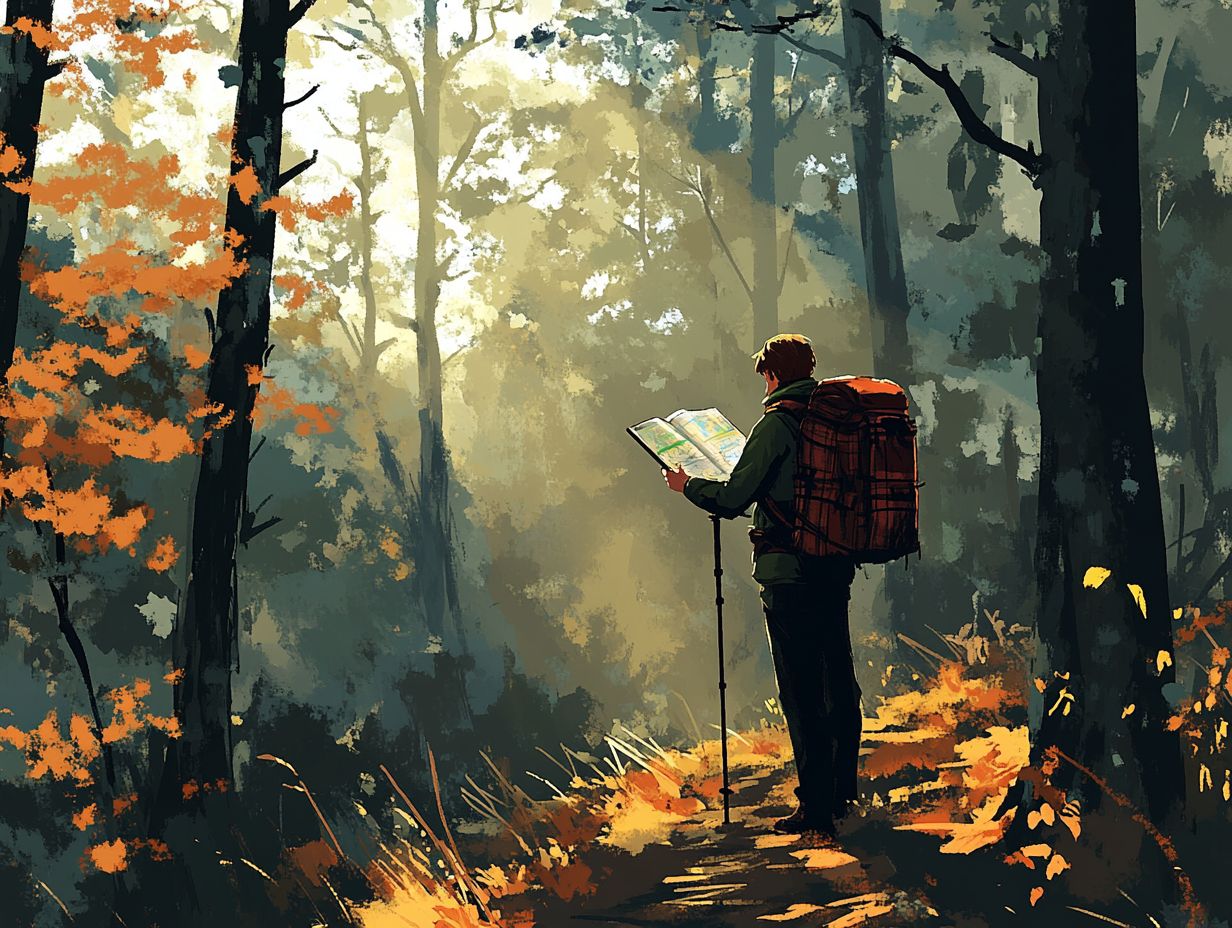
What should I consider before embarking on a solo hiking trip?
Assess your physical fitness and experience level before you set out. Research the trail’s difficulty, weather, and potential hazards.
How can I stay safe while hiking alone?
Always inform someone about your hiking plans. Bring the right gear, stay on marked trails, and trust your instincts!
Be aware of your surroundings. Know when to turn back if conditions get tough.
What should I do if I encounter wildlife while hiking solo?
If you see wildlife, remain calm. Give the animal space and never approach or feed it.
If necessary, slowly back away while making noise to scare it off. Carry bear spray or other deterrents for safety.
How can I prepare for emergencies on a solo hiking trip?
Pack a first aid kit, extra food and water, a map, and a fully charged cellphone before your hike. Research emergency contact numbers for the area.
Consider taking a wilderness first aid course. It can be invaluable in preparation!
What precautions should I take when hiking solo in remote areas?
Have a clear communication and navigation plan. Bring a satellite phone or personal locator beacon, and always carry a map and compass.
Be aware of weather changes and have a backup plan in case of emergencies.
What are some ways to make the most of a solo hiking trip?
Solo hiking is a unique and rewarding experience! Take breaks to appreciate the scenery and challenge yourself on new trails.
This is your time for self-reflection, and it s the perfect opportunity to disconnect from technology and enjoy the quiet of nature.

